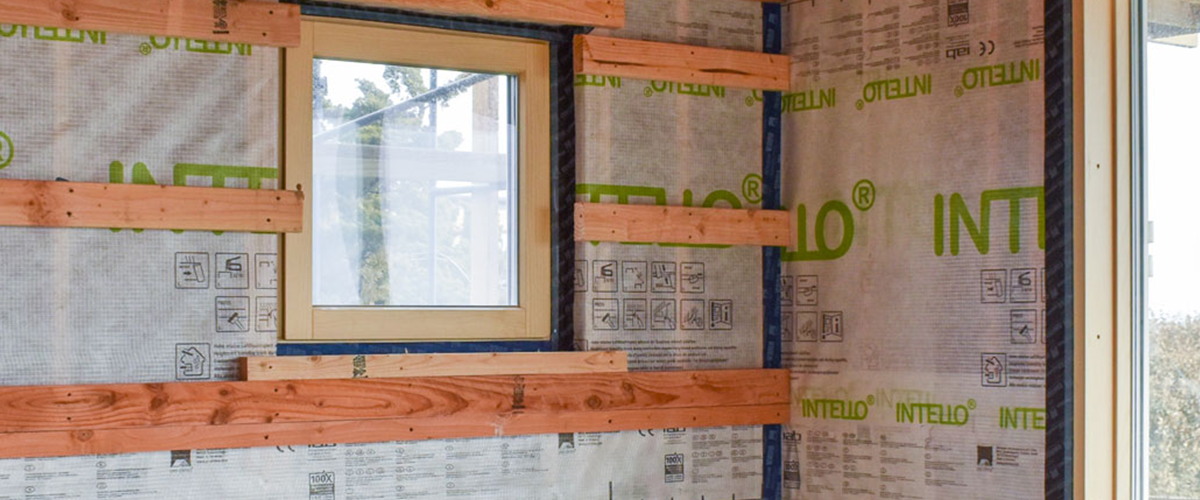Foundational Elements Of High Performance Enclosures
We’ve heard the chorus of misinformation throughout years of speaking to builders across North America: “Buildings need to breathe – you’ll destroy them if you make them airtight”. “In a cold climate, if you don’t put a vapour barrier on the inside of the assembly you’ll rot the structure out – the vapour must be stopped!”
Of course, this is almost exactly backwards: the air must be stopped and the vapour should be allowed to dry out. So what is going on? We’ll take a closer look in a series of posts on the subject - because, as it so happens, air and vapour control are of utmost interest and concern.
Let's start by quoting Dr. Joe Lstiburek:
“Today walls [and roofs] need four principal control layers—especially if we don’t build out of rocks. They are presented in order of importance:
- a rain control layer
- an air control layer
- a vapour control layer
- a thermal control layer
A point to this importance thing here, if you can’t keep the rain out don’t waste your time on the air. If you can’t keep the air out don’t waste your time on the vapour." – Building Science Corp. July 2010, Insight –The Perfect Wall
Pretty much everyone gets #1. If you and your stuff gets wet, it gets ruined and you get sick. So while leaky buildings will always be with us, no one is claiming ignorance when it comes to allowing water infiltration. #4 is also, for the most part, straightforward enough: to stay warm you need a good blanket of insulation. Yet #2 and #3 – air and water vapour, are the subject of no end of debate and confusion. Air control and vapour control are the weakest link in our collective understanding of building science, an Achilles heel in achieving high performance building at a greater scale.
Air control and air tightness is a cornerstone attribute of all high-performance building. Air control is second only to keeping the rain out so important because it has profound effects on the key metrics of performance:
- Indoor Air Quality (IAQ)
- The optimization of thermal insulation
- Prevention of bulk vapour penetration
Indoor Air Quality (IAQ)
If you can't control the air, you can't control the quality of the air. Plain and simple. Unfortunately this is a widely ignored fundamental truth. Until we control the air flow through a home the IAQ is a crapshoot. And the first step in controlling the air flow in a building is an airtight enclosure with a continuous air barrier. That way, we get to decide when and where the air is flowing.

Fraunhofer Institute for Building Physics, in Stuttgart, showed that a leaky enclosure can decrease the insulation’s effectiveness by a factor of 4.8 - making a 500 sf leaky building require the same amount of heating as a 2,400 sf airtight building!
%20and%20protected%20by%20air%20tightness%20(at%20right)</strong></p>%0A<p>Consider%20your%20sweater%20on%20a%C2%A0breezy%C2%A0day,%20and%20the%20effect%20of%20putting%20on%20a%20windbreaker.%20The%20insulation%20performance%20is%20best%20optimized%20with%20an%20air-tight%20layer%20on%20all%20sides:%20an%20air-tight%20layer%20at%20its%20interior%20face%20(such%20as%20<a%20href=) (Intello Plus) and a wind-tight/air-tight layer on the exterior face (such as Solitex Mento Plus).
(Intello Plus) and a wind-tight/air-tight layer on the exterior face (such as Solitex Mento Plus).
If you are going to bother to insulate, get the most out of it with with complete air sealing and airtightness.
Prevention of Bulk Vapour Penetration

BSC: diffusion wetting vs. air leak wetting
While there is much gnashing of the teeth (and some of it rightly so) about vapour diffusion resulting in condensation and structural damage, a far bigger threat to the structure is bulk water vapour penetration via air leaks in well insulated buildings. With this iconic diagram from the Building Science Corporation paper RR-0412: Insulations, Sheathings and Vapour Retarders, one can see that the potential water intrusion from just a small air leak can be up to 90 times greater than the water that might diffuse through gypsum board into the enclosure.
With such extreme wetting, even a vapour open construction may not be able to dry fast enough to keep the structure safe. Here we see water damage from an air leak in a such a vapour open construction.

Water damage from air leaks in vapour open construction
Uncontrolled air movement through OR within* the building enclosure, carrying bulk vapour, causes the greatest amount of moisture related building damage. Keeping the enclosure airtight on the interior is an essential step in keeping it dry. *convective loops within wall cavities can transport and deposit bulk vapour when it reaches the dew point.
Conclusion
Because air tightness is essential for clean indoor air, optimized insulation and minimizing of wetting damage, it should be seen as a fundamental and integrated insurance policy on the performance of the building. The more airtight your enclosure, the better the insurance policy you have.



